-
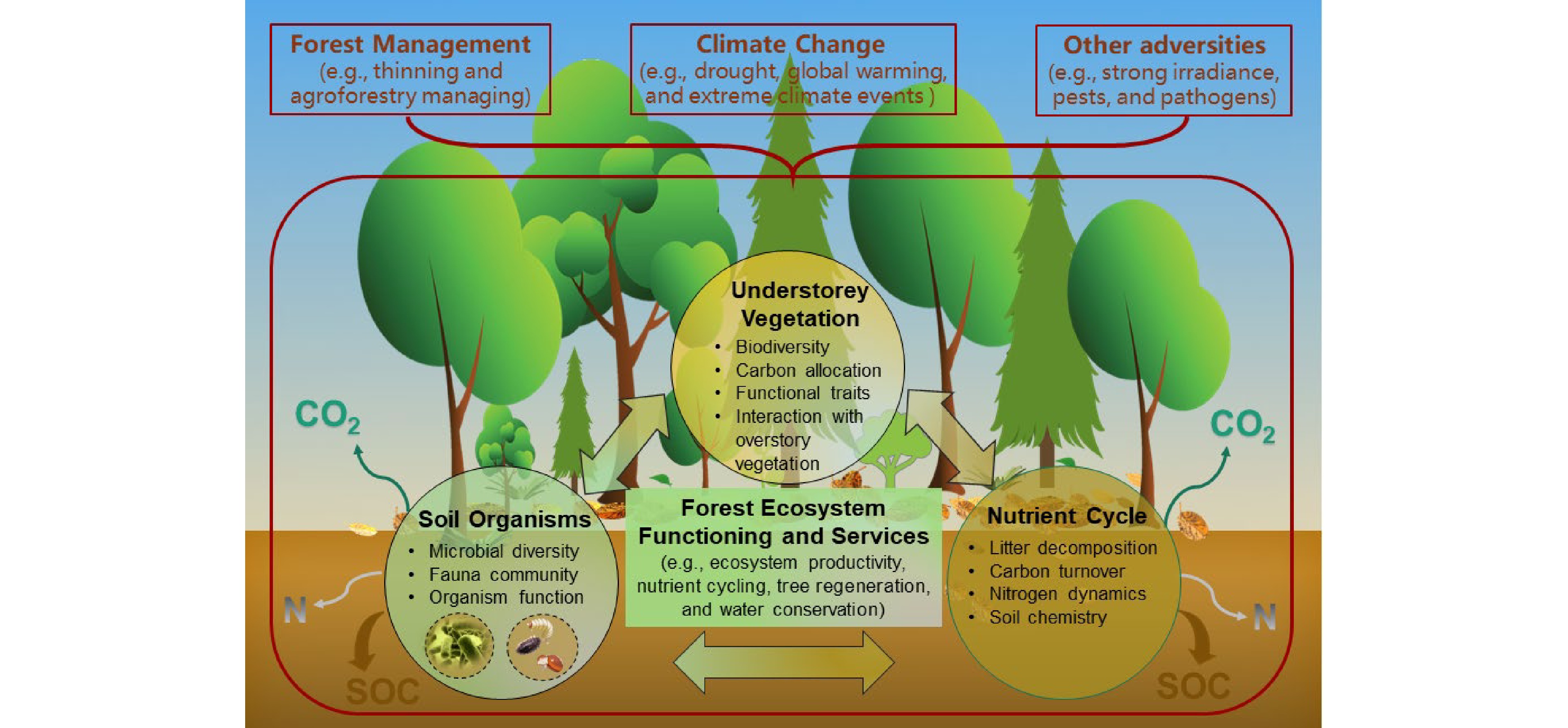
Figure 1.
Conceptual roles of understory vegetation in forest ecosystem functioning and services, and its response to management practice and climate change. CO2, carbon dioxide; SOC, soil organic carbon; N, nitrogen.
-
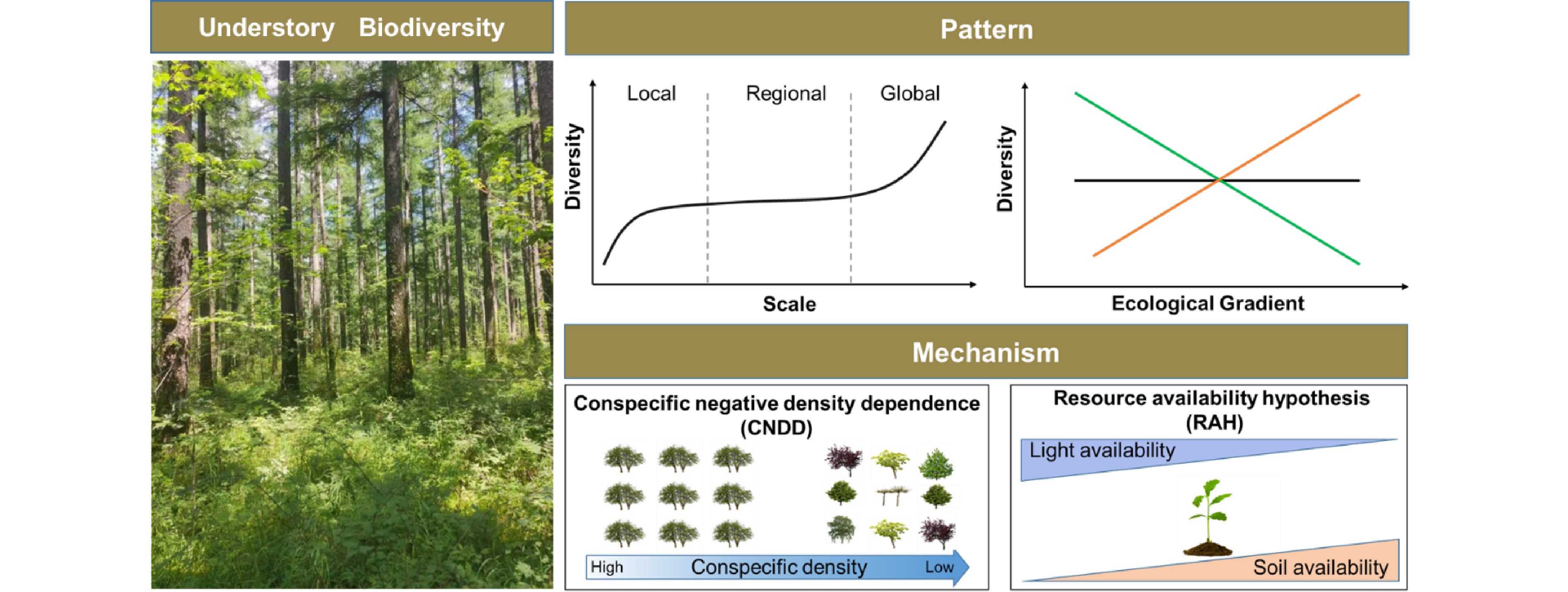
Figure 2.
The patterns and mechanisms underlying understory vegetation diversity. 1) Understory diversity pattern varies significantly along spatial scales and ecological gradients. 2) Conspecific negative density dependence (CNDD) and resource availability hypothesis (RAH), which can be used to account for the formation and maintenance mechanisms of understory vegetation biodiversity. The strength of CNDD change along the conspecific density gradient, while the role of RAH varies with resource (e.g., light and soil fertility) availability.
-
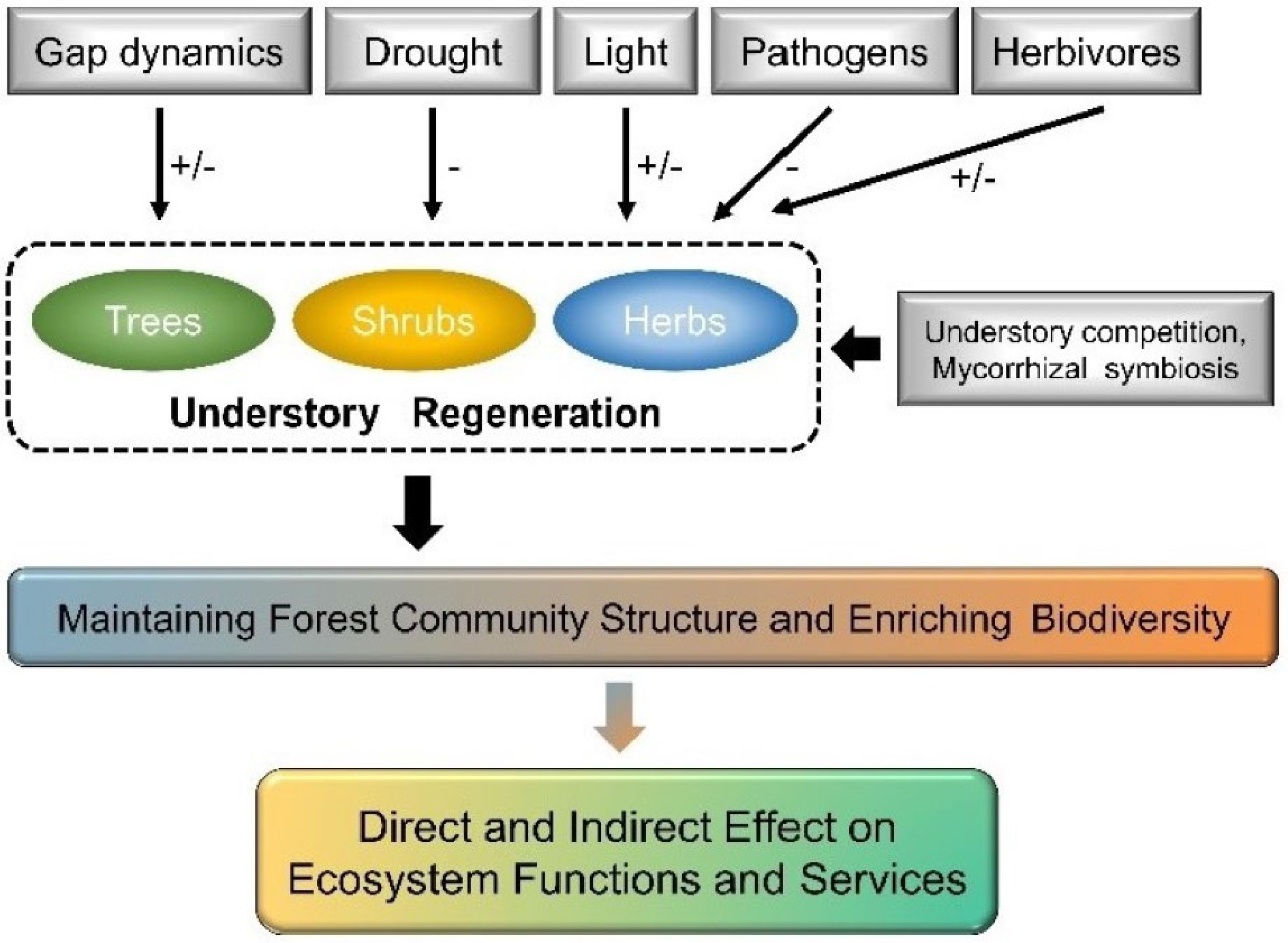
Figure 3.
Pathways of bio-abiotic factors effect on understory vegetation regeneration. Positive effects of bio-abiotic factors to understory vegetation are shown as plus signs (+), and negative effects as negative signs (−).
-
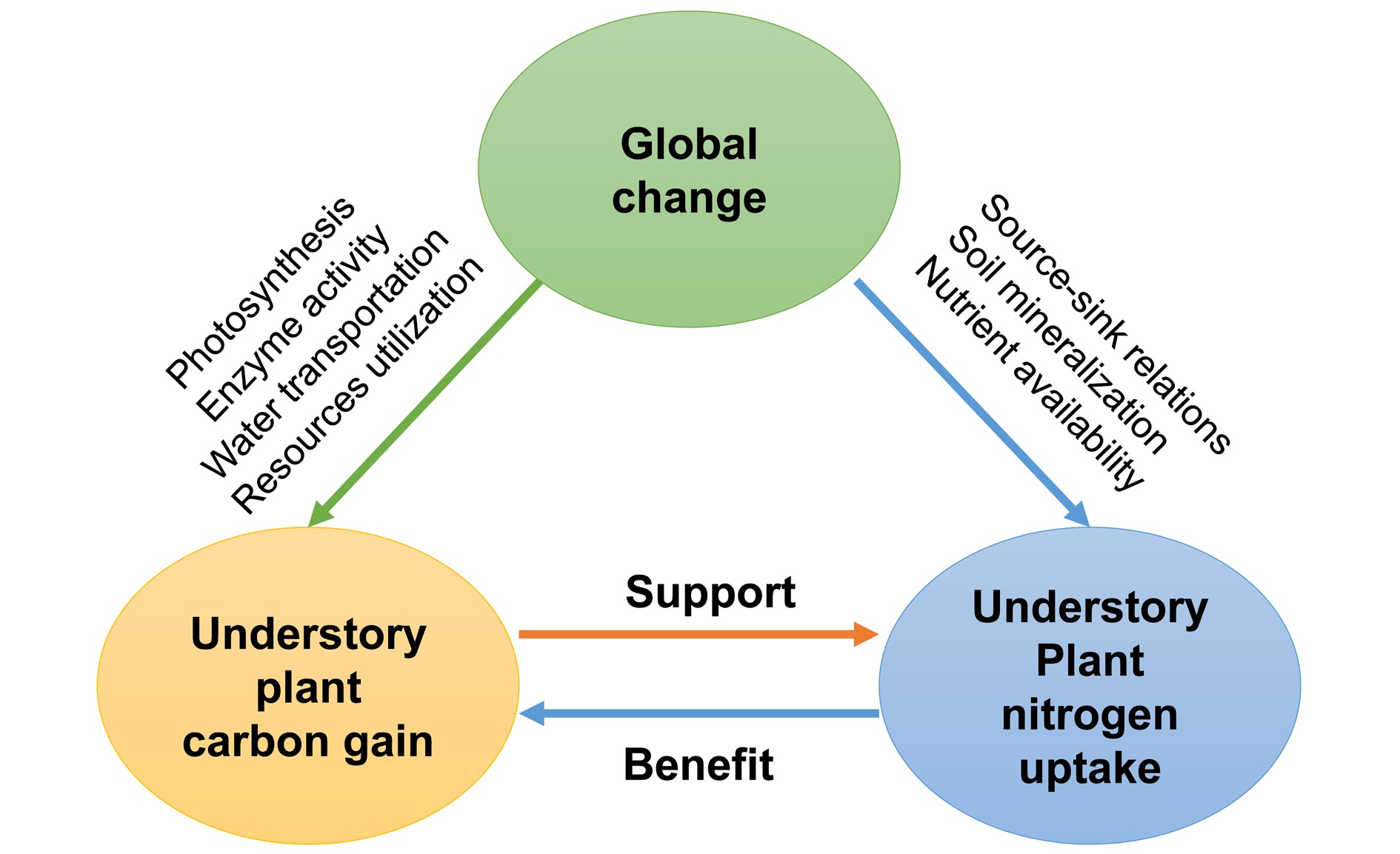
Figure 4.
A framework of global change effects on carbon gain and nitrogen uptake by understory vegetation.
-
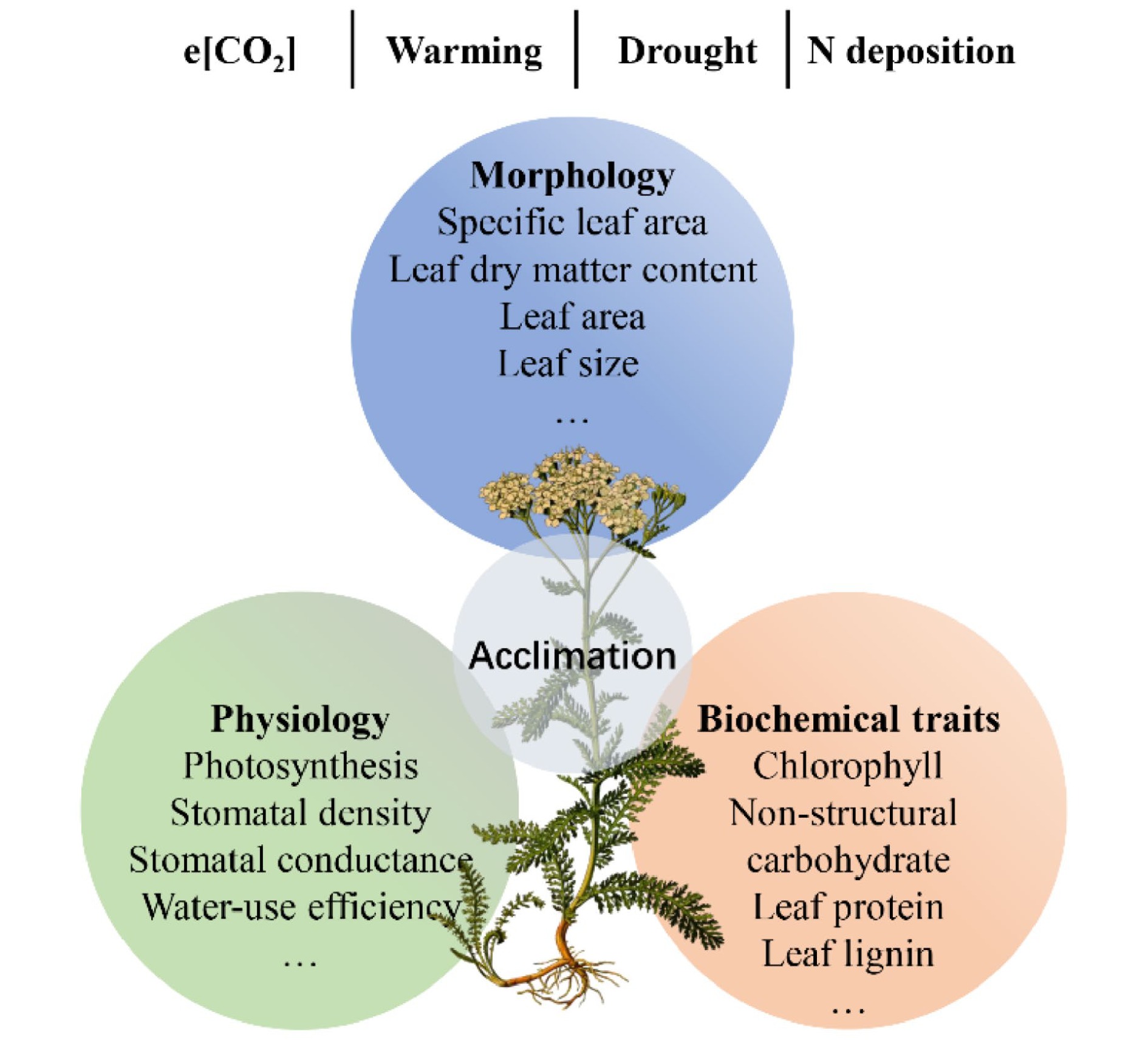
Figure 5.
The overview on the responses of understory plant function traits to environmental changes in forest ecosystems.
-
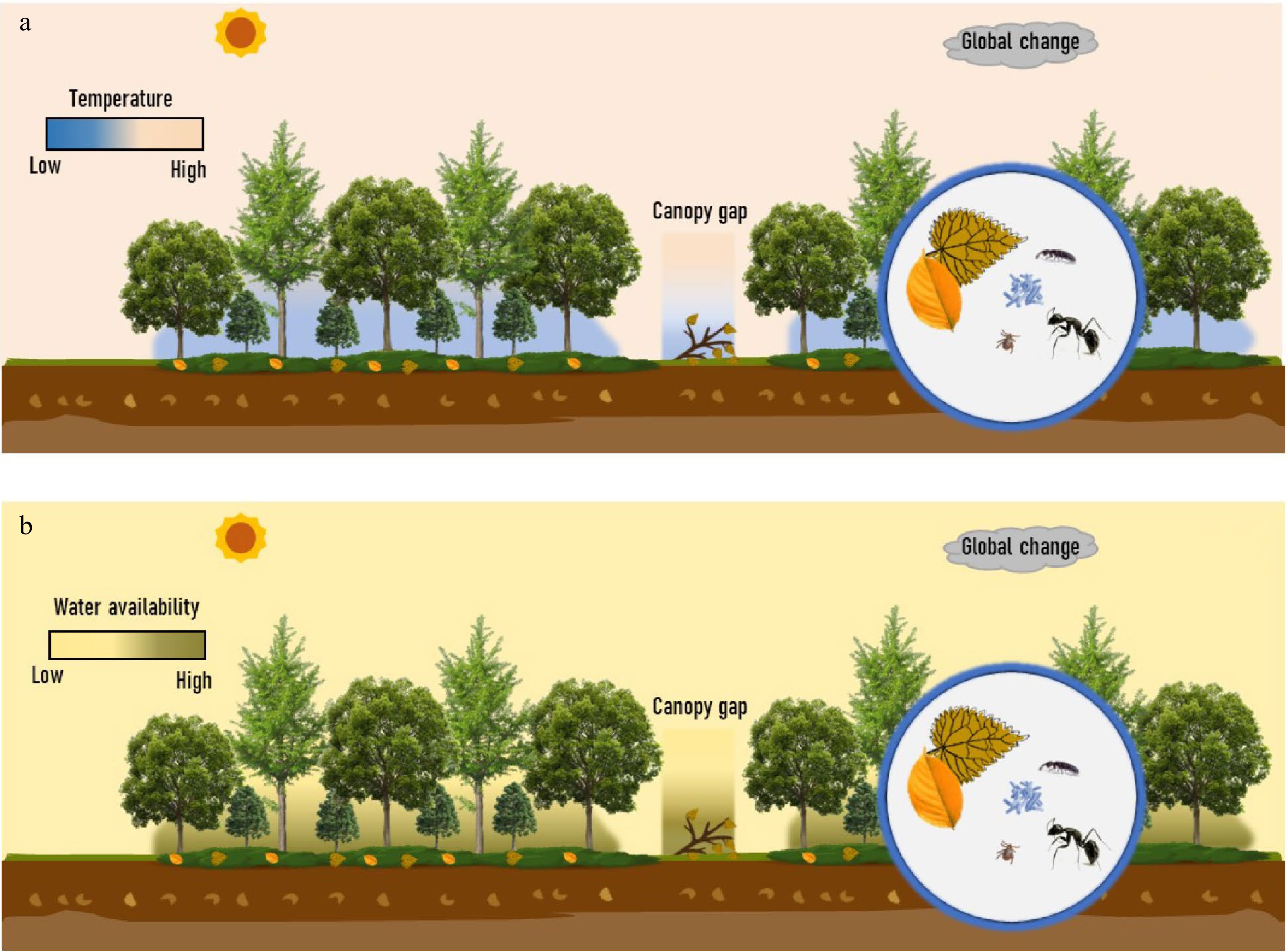
Figure 6.
Litter decomposition of understory vegetation and potentially drivers. The potential drivers include litter quality in a 'trees-shrubs-herbs' mixed litter, microclimates (e.g., temperature, moisture contents, and light), and decomposers (e.g., microorganisms and soil fauna) in the context of global changes, all in a close relatedness to understory vegetation. (a) Difference in temperature and the other potential drivers among the overstory, understory, and canopy gap. (b) Difference in water availability and the other potential drivers among the overstory, understory, and canopy gap. Two panels highlight the unique habitats of the forest understory.
-
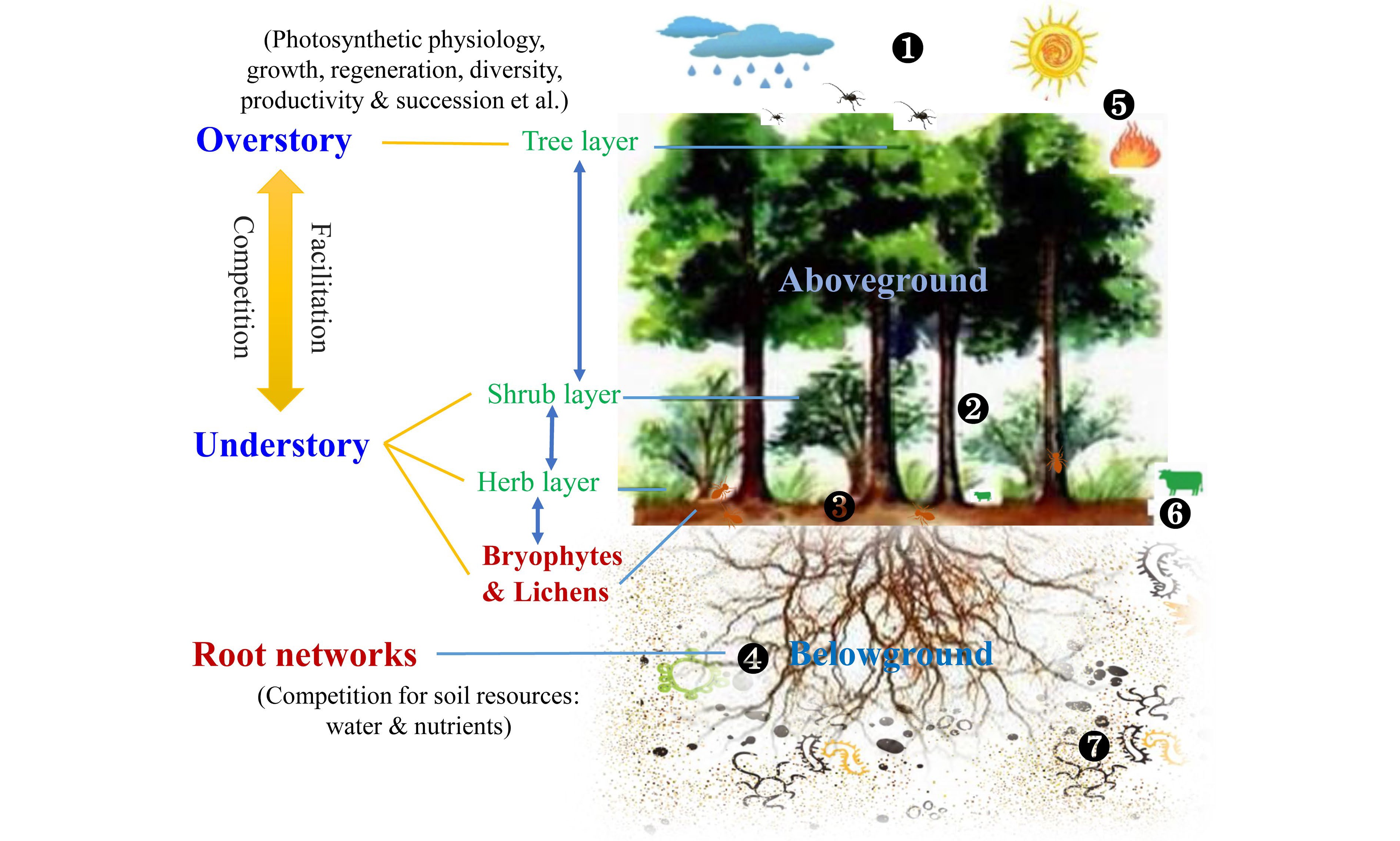
Figure 7.
Interactions between understory vegetation and overstory trees. Key regulation processes are shown: 1) Light and rainfall interceptions by overstory change the understory microclimate; 2) Composition and diversity of understory vegetation influence preconditions for seed germination and regeneration of overstory; 3) Under- and over-story interactions affect ground surface arthropods, surface runoff and litter decomposition; 4) Root interactions between under- and over-story, including mycorrhizal network, root exudate and allelopathic effect, alter belowground water and nutrient cycling as well as information transformation; 5) Abiotic and biotic factors such as drought, fire, and insect pests, directly influence the dynamics of the whole forest community; 6) Large mammalian herbivores and some arthropods also directly feed on understory vegetation; 7) Soil micro-food webs feed on roots (i.e., root-feeding nematodes) and consume related residues, thus resulting in changes in soil environments. These above- and below-ground processes can shape under- and over-story interactions, thereby influencing their photosynthetic physiology, growth, regeneration, productivity, and the like. However, bryophytes and lichens are always overlooked, and the root system has also received little attention.
-
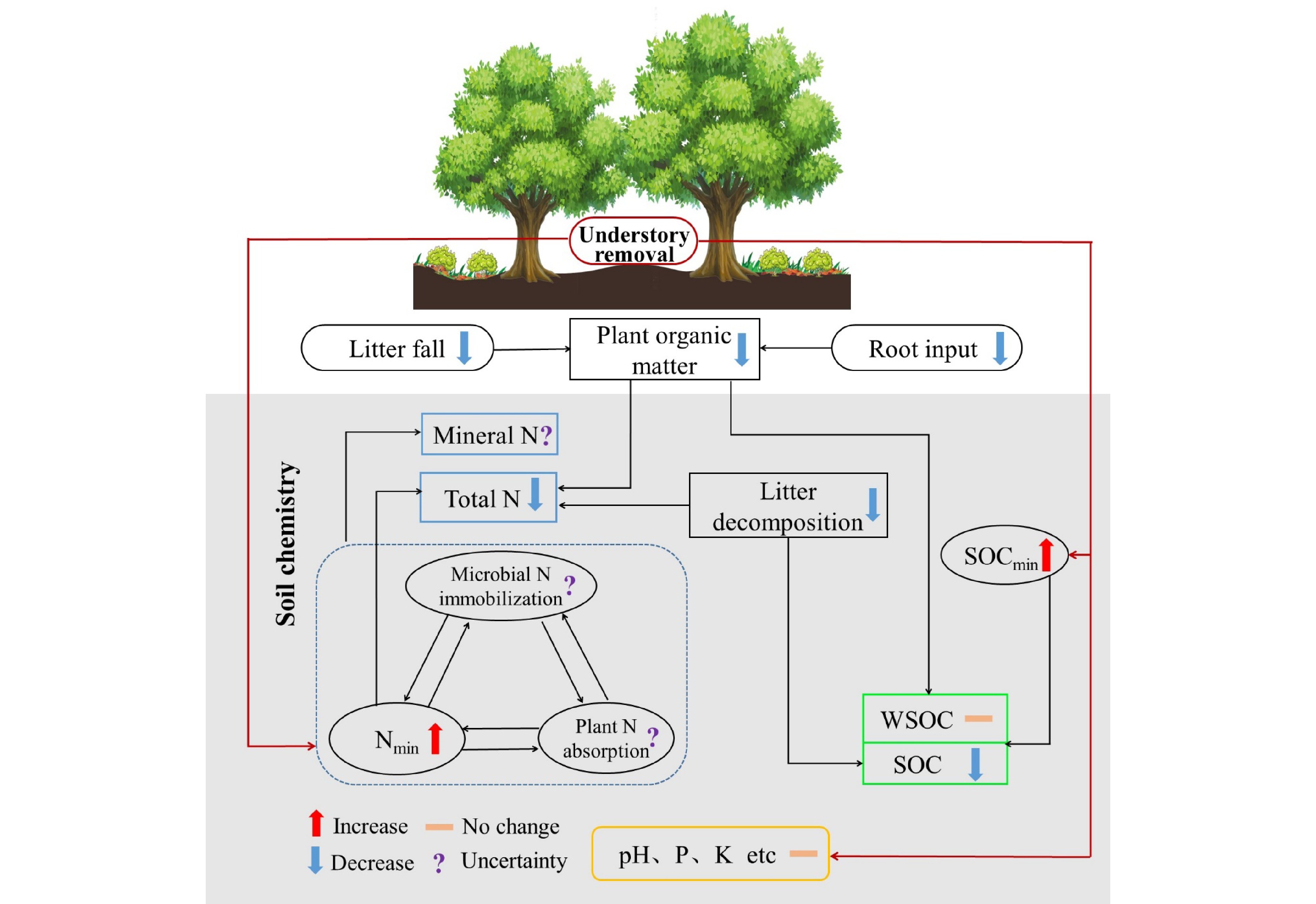
Figure 8.
Conceptual diagram illustrating the effects of understory removal on soil chemistry. The symbol to the right of the parameter represents the possible response of the parameter after understory removal based on literatures. The upward and downward arrows represent the promotion and inhibition effects, respectively; the short horizontal line indicates that the influence is not significant, and the question mark represents the uncertain effect. SOCmin, soil organic carbon mineralization rate; Nmin, soil net nitrogen mineralization rate; WSOC, water-soluble organic carbon; N, nitrogen; P, phosphorus; K, potassium.
-
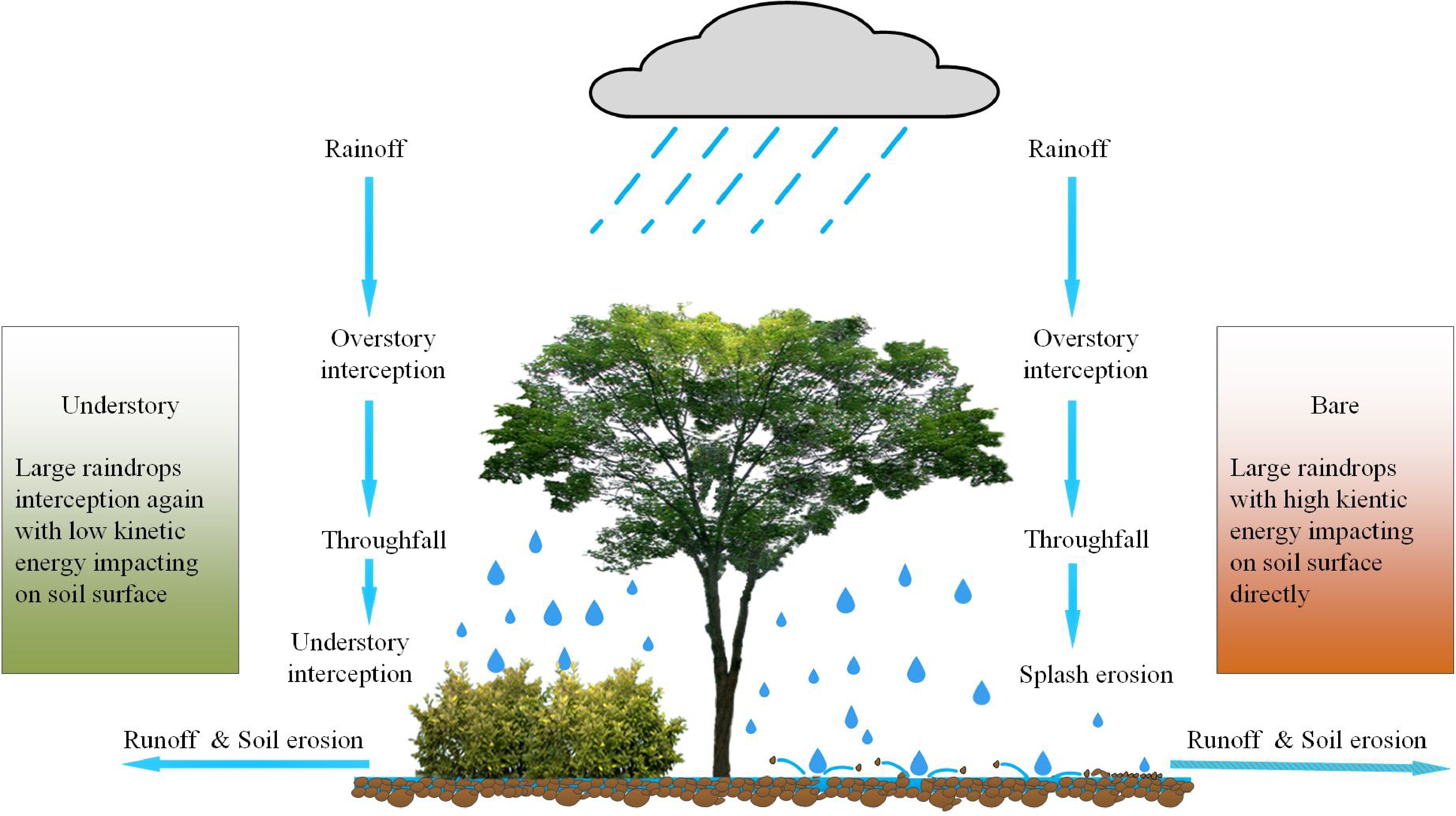
Figure 9.
Schematic diagram of forest understory functioning on soil and water conservation. Rainfall is first intercepted by overstory, and then throughfall (large raindrops) directly impacts on the soil with high kinetic energy (splash erosion), if there is no second interception by understory vegetation. It would result in more water runoff and sediment erosion.
Figures
(9)
Tables
(0)